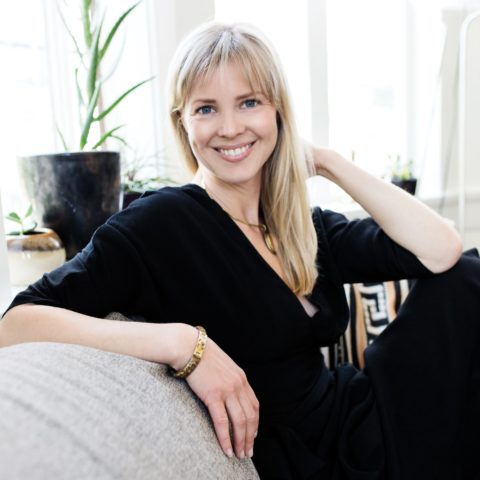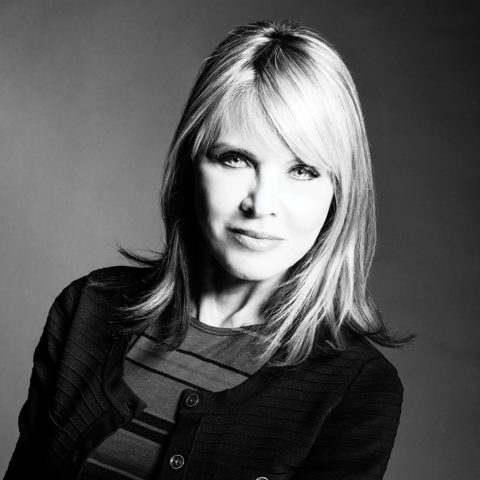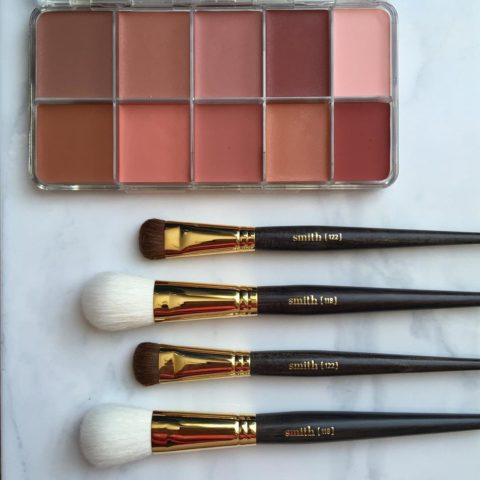The New First Ladies in Beauty
The beauty entrepreneurs, hairstylists and makeup artists who are changing the world.

Ashley Callingbull
Meet the first Canadian and the first Indigenous woman to win Mrs. Universe.
For Ashley Callingbull, being the first Canadian and first Indigenous woman to win the Mrs. Universe title in 2015 wasn’t enough. “I always want to accomplish the things people think I can’t accomplish,” says Callingbull, who also made history last year when she and her stepfather became the first First Nations team to join the cast of The Amazing Race Canada, placing third.
When the 27-year-old Albertan took the Mrs. Universe crown, she used the attention she got to raise awareness of her people’s issues. “I think I was the first beauty queen to ever be on CBC’s Power & Politics,” she says. “I think more people’s eyes were opened to what’s happening to First Nations people.”
She wasn’t content to stop there. Callingbull, who overcame the physical and sexual abuse and poverty she endured as a child, has continued to act as an advocate for First Nations’ rights. She called out former prime minister Stephen Harper and asked his successor, Justin Trudeau, to be accountable for the promises he made during the election. “I lived in fear when I was a child, and I just don’t want to live like that anymore,” she says. “I tell myself to be fearless no matter what. I speak the truth for people who can’t be heard.”
Politicians aren’t the only ones she’s speaking to. Callingbull travels the world to host workshops for at-risk First Nations youth. Right now, she’s focused on acting, writing and charity work, but becoming a politician is something she would consider in the future. “It’s important to be outspoken and involved with what’s going on in our country—to make a difference in any way that we can,” she says. As for the position she’d consider? “I would go for the big job,” says Callingbull, laughing. “If I get into politics, I would want to be prime minister. I dream big.” —Carly Ostroff

Odile Gilbert
Gilbert was one of the first women to make it as a fashion hairstylist.
If Odile Gilbert fastened a Fitbit to her wrist, it would crash from her volume of activity. “I don’t need to go to the gym; I’m always standing and doing something,” she says over the phone from Paris. Indeed, the French coiffeuse juggles fashion shows, editorials and ad campaigns, often jetting around the globe to work. In addition to her talent and her tutelage under the legendary Bruno Pittini, which began when she was just 18, Gilbert’s wind-up-doll work ethic surely helped her break into what was, and still is, a male-dominated industry. When she moved to New York in the early ’80s, Gilbert wasn’t aware that she was about to put a hefty crack in the glass ceiling. “I didn’t realize until people told me that I was the first woman working in fashion as a hairstylist,” she says. Even the reactions she got when arriving at some of her first gigs didn’t tip her off. “They’d say, ‘Oh, you’re a girl!’” To which she responded, “Yes, why?” In fact, the only barrier Gilbert recognized when she started landing more high-profile jobs was that she only spoke French. “I was with Richard Avedon and Steven Meisel, and I had no clue what they were saying!” Undeterred, she enlisted a Harvard student to teach her English. —Sarah Daniel

Christine Nagel
The first female perfumer at Hermès.
When Christine Nagel was handpicked to succeed Hermès’s Jean-Claude Ellena in 2014, she became the house’s first female perfumer. This is an impressive feat for two reasons: Ellena is revered in the industry (“He’s a legend, a living god in perfumery,” says Nagel) and the fragrance industry is known for its nepotism: members of Grasse-born families typically land the top roles. Nagel is an outsider, to say the least. “I am Swiss born with an Italian mother,” she says. Armed with a chemistry degree, she began her career working on the science side of the business at the fragrance house Firmenich but soon realized she wanted to be a perfumer. When Nagel was told she didn’t fit the traditional profile (translation: She wasn’t a male with family connections), she wasn’t deterred. Instead, she went on to create fragrances for Jo Malone and Narciso Rodriguez. Her debut fragrance for the French luxury label is Galop d’Hermès, a blend of rose and leather. Though it’s tailored to women, Nagel doesn’t categorize fragrances by gender. “Perfume is an art, and, like all the arts, it has no gender,” she says. It’s an ethos that’s also symbolic of where the industry is heading—these days women outnumber men in perfume school. Still, there are reminders of what she and the women who paved the way before her—like Germaine Cellier, who created fragrances for Balmain and Balenciaga in the mid-1900s—have achieved. “In French, the word perfumer is only masculine, so my business cards read ‘Christine Nagel Parfumeur,’ not Parfumeuse. That says it all.” —S.D.

Allison Audrey Weldon
Her body cream is blazing a trail in natural beauty.
If a body cream could be a pioneer, Sangre de Fruta’s would be one. Founder Allison Audrey Weldon based her cream on a recipe from her herbalist mentor, “a wonderful Chilean woman who was a bit witchy.” After making a few tweaks, she developed a texture that’s unmatched by conventional body balms. Buttery in its jar, the all-natural, waterless formula transforms into an oil and melts into your skin. The secret is in her technique: whipping shea and coconut butters with beeswax and precious oils, cooling it, and repeating until the sweet spot is reached. “It’s kind of like whipping ice cream,” she says. “You whip it until it’s nice and stiff, but not enough that it gets too hard.” It was recently endorsed by GOOP, resulting in Weldon’s busiest week of online orders to date. A one-woman show, Vancouver-based Weldon is expecting in April but struggling to enlist help. “I’m a bit of a control freak,” she says. “I’m leaving it to the last minute.” No doubt she’ll whip up a solution. —Lesa Hannah

Sandy Linter
Linter was one of the first artists to sign with a cosmetics company.
Sandy Linter was supposed to be typing and taking calls at her first secretarial job, but instead she was doing her co-workers’ makeup and giving them beauty advice in the bathroom. “I didn’t know what I was doing,” she says. “I was going from a gut feeling.” College didn’t beckon, but a career as a makeup artist did. By the early ’70s, she was working at Kenneth Battelle’s famed Manhattan salon, applying liner on Jackie Kennedy. “I forgot to sharpen the pencil,” recalls Linter. “She went ‘Ah!’ and I freaked out. I turned around to sharpen the pencil and then turned back around to see if she’d left the room. She just lay right back on the chair.” Vogue soon started calling, bringing Linter into the world of photographers, like Irving Penn, and top models of the moment, like Gia Carangi, who became a dear friend. (“The more I got to know her and who she really was, the less makeup I wanted to put on her,” she says.) At the time, there were only a handful of makeup artists doing editorial work in New York, and Linter was the only female in a group that included well-known names such as Way Bandy and Joey Mills. She was also one of the first artists to sign on with a cosmetics company. Lancôme brought her on as a product adviser, and she still works with the brand today. Like most of us, Linter looks back and is nostalgic for a simpler time when Studio 54 was the spot and washing your face wasn’t a multi-step endeavour. “In those days,” she says, “we did drugs and slept in our makeup!” —S.D.

Nyla and Janelle Olynyk
These sisters are among the first to make professional contouring DIY.
Despite their position in the competitive world of cosmetics, Calgary-based sister act Nyla and Janelle Olynyk don’t answer to a board of directors. Four years ago, the two launched their own line of makeup tools called Smith Cosmetics. A veteran makeup artist, Nyla was aware that her clientele wanted to learn how to create the Kardashian look themselves—YouTube wasn’t enough. So she set out to develop the distinctively shaped #122 and #124 cream highlight and contour brushes, complete with antibacterial handles. Celebrity makeup artists to stars like Lorde, Katharine McPhee and Amber Heard are fans. “Tools are essential for all artists,” says Nyla. “They enable us to express and create. If I can help advance the talents of my fellow artists in some small way, I will be truly honoured.” —Caroline Gault







